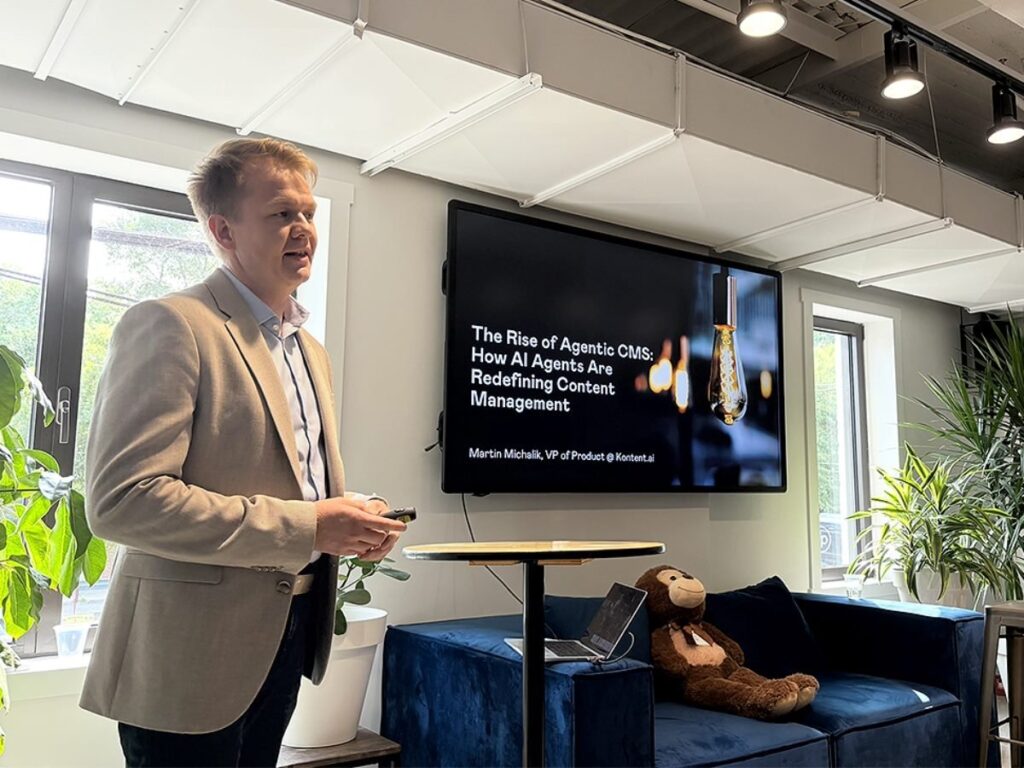Main points
Automated governance. Agentic CMS automates compliance, brand standards, and SEO workflows.
Content efficiency. Enable rapid updates and localization across large content portfolios.
Impact on the team. Marketing and content teams can focus on creativity with less repetitive work.
Kontent.ai introduced Agentic CMS on October 14th, describing it as the first content management system built specifically for the AI era. The platform focuses on governance, compliance, translation, and large-scale content update automation.
The new system addresses the challenges faced by marketing and content teams who are expected to publish more content with fewer resources. According to company officials, Agentic CMS reduces the time required to update thousands of content items from months to minutes.
table of contents
Users affected by Agenttic CMS
Marketing and content teams managing large content portfolios
Organizations with strict regulatory compliance requirements
Global brands that require consistent localization and translation
AI is reshaping the content management landscape
Content management has become a critical business function as organizations struggle with exponential content growth, generative AI, and increasing regulatory demands.
Kontent.ai, a SaaS headless CMS known for its WYSIWYG editor and collaboration features, is expanding its AI capabilities. The company has previously invested in its Author Assist feature, which it claims will speed up content authoring.
The content management landscape faces significant challenges. IDC predicted that the world will generate 180 zettabytes of data annually in 2025, but according to Gartner, poor data quality costs organizations nearly $13 million annually. Duplicate content, outdated information, and fragmented systems lead to employee stress and decreased productivity.
The CMS market is moving towards AI-driven platforms that deliver personalized experiences in real-time. Industry experts recommend documenting your organization’s knowledge, extending existing systems rather than replacing them, and experimenting with AI in production.
Generative AI allows you to increasingly automate content creation from modular components. Modern CMS platforms must treat content as data, while digital asset management systems must handle increasing amounts of media. Kontent.ai’s new Agentic CMS aims to address these challenges through automation of governance, compliance, and translation workflows.
Related article: Agentic AI and the future of customer support: What CX leaders need to know
AI drives CMS efficiency, not creativity
AI should be responsible for repetitive tasks, not creative ones.
– Ian Norton, Vice President of Marketing
content.ai
Main features of Kotent.ai’s agent CMS
This platform aims to automate routine content management tasks while maintaining quality standards.
Feature Description Brand Consistency AI checks content against company tone and terminology standards. Compliance Automation Automatically enforce regulations and maintain audit trails. Manage localization and translation workflows across the global content management market. SEO and GEO Optimization Built-in optimization for content visibility across channels. Bulk Content Update Find and update your content as regulation changes.
Background of Kontent.ai
Kontent.ai targets enterprise digital and marketing leaders with a headless content management system. The company became an independent company in 2022 after being spun out from Kentico Software, which was founded in Brno, Czech Republic in 2004.
Product features
The company offers a cloud-based, headless CMS designed to separate content creation and presentation, allowing organizations to manage and deliver digital content across multiple channels. The company’s platform supports structured content, workflow automation, and API-driven integrations, which the company claims can accelerate digital experiences. Built-in collaboration tools are intended to streamline content operations for distributed teams.
market position
The company operates in the enterprise content management sector, serving medium and large organizations with complex digital needs. Typical customers include digital, marketing, and IT teams looking to modernize their content infrastructure. Industry analysts note that the company focuses on flexibility and scalability for its global brands. The company competes with other headless CMS providers as well as traditional enterprise CMS vendors that extend to API-first architectures.
Do you have any tips you would like to share with our editorial team? Please contact us:



